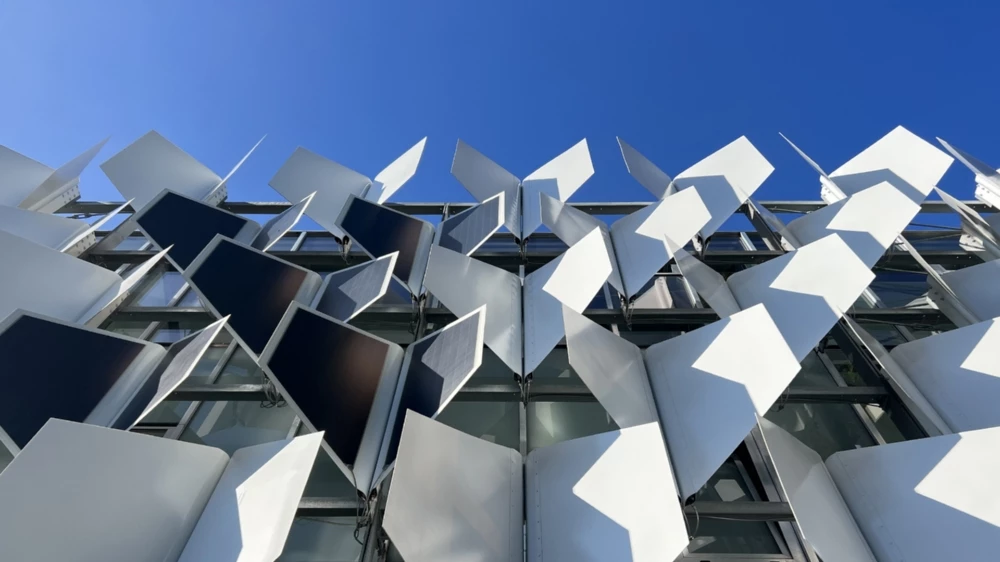Nobody likes buildings that are too hot in the summer or too cold in the winter. That's where the FlectoLine facade comes in, as it uses not just one but two bio-inspired mechanisms to automatically regulate how much solar thermal energy gets through a building's windows.
The FlectoLine system is being developed via a partnership between Germany's universities of Stuttgart and Freiburg, as part of the international Flectuation research project.
For the past two years, a prototype facade has been in use on a greenhouse in the University of Freiburg's Botanical Garden, in the state of Baden-Württemberg. The scientists behind the installation were honored earlier this month at the first-ever Award for Bio-Inspired Innovations Baden-Württemberg, where they received a special prize.

Measuring 83.5 square meters (899 sq ft), the prototype covers the exterior of the windows along one side of the greenhouse. It's made up of an array of shading elements, each one of which in turn consists of two fiber-reinforced thermoplastic flaps that can spread apart from one another or fold together.
The elements in general are definitely reminiscent of the traps on a Venus flytrap, although they were actually inspired by the prey-catching appendages of another carnivorous plant, the aquatic waterwheel (Aldrovanda vesiculosa).
The pneumatic "hinge zone" at the base of each flap, however, was inspired by veins in the shape-shifting wings of the striped bug (Graphosoma italicum). As air is pumped into that flexible elastic hinge, the structure expands, causing the stiffer main flap to fold out to one side.

As the two flaps in each element fold out to either side simultaneously, they block sunlight from going through the window, helping to keep the interior of the building cool. In hot weather, this action could make a big difference in how much air conditioning is required.
In cooler weather, the flaps are folded inwards so they meet in the middle – this action is triggered simply by shutting off the airflow to their hinge zones. The elements then maximize the amount of room-warming sunlight that passes through the window, reducing the demands on the building's heating system.

The whole facade can be set to work automatically, in response to weather conditions, time of day, and ambient temperatures. That said, it can also be manually operated as needed. And as an added bonus, the prototype is powered by photovoltaic cells installed on the outside surfaces of its elements.
"In light of the challenges posed by climate change, architecture must take new directions," says research associate Edith A. Gonzalez, of the University of Stuttgart. "With FlectoLine, we have successfully demonstrated how much potential adaptive facades hold in this regard."
Source: University of Stuttgart




